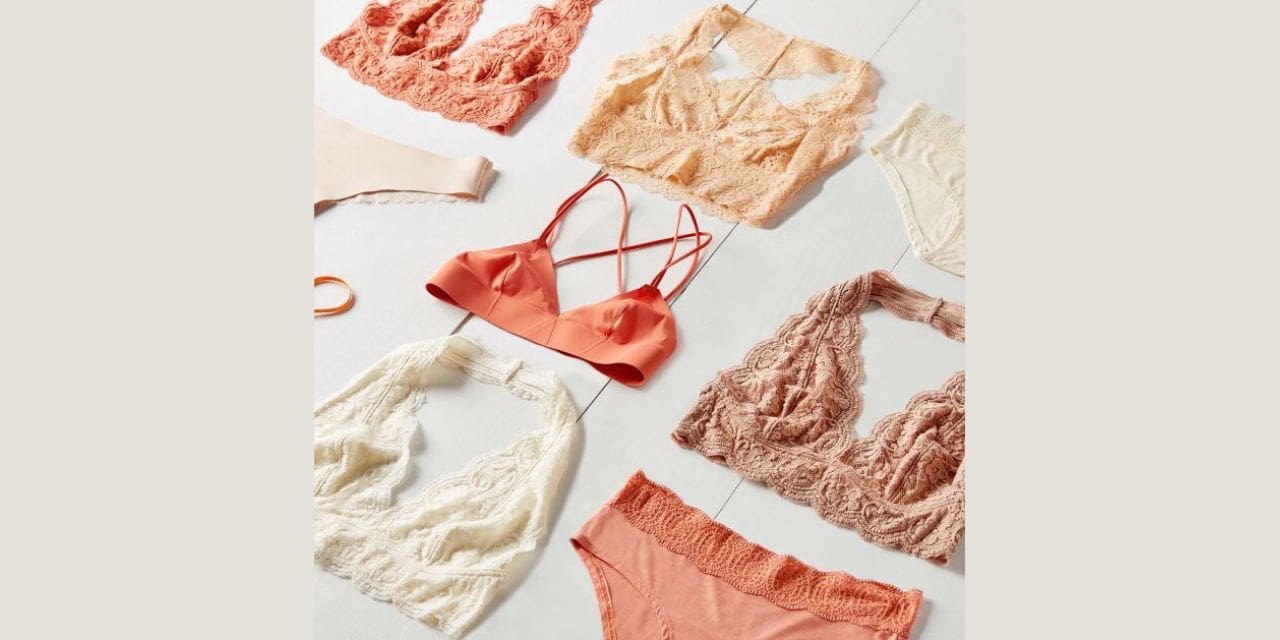By Tanvi Munjal
Women’s undergarments have a long and fascinating history dating back thousands of years. Ancient civilizations like Egypt, Greece and Rome used simple loincloth-style undergarments. In the Middle Ages, women wore long shifts or chemises as undergarments. The modern brassiere was invented in the late 19th century, while the first commercial manufacture of sanitary pads began in the early 20th century.
Today, the global women’s underwear market is a multi-billion-dollar industry, with major brands like Victoria’s Secret, Hanes, Jockey, Wacoal and Triumph. The market is driven by factors like rising disposable incomes, increasing awareness of health and hygiene, and the growing influence of Western culture.
Manufacturing Process Overview
The manufacturing process of women’s undergarments involves several key steps, from raw material sourcing to finished product distribution.
Raw Material Sourcing:
- Fibres: Natural fibres like cotton, silk, and wool, as well as synthetic fibres such as nylon, polyester, and spandex, are commonly used.
- Lace: Lace is an essential component of many undergarments. It’s available in various patterns and materials, including cotton, nylon, and polyester.
Yarn Preparation:
- Spinning: Fibres are spun into yarn using machines like ring spinning, open-end spinning, and air-jet spinning. Spinning Machines: Convert raw fibres into yarn. Brands like Rieter and Trützschler are known for their spinning machinery.
- Twisting: Yarn is twisted to improve its strength and elasticity.
Fabric Manufacturing:
- Weaving: Yarn is woven into fabric using looms like shuttle looms, rapier looms, and air-jet looms. Weaving Machines: Used for producing woven fabrics. Picanol and Staubli are notable brands for weaving technology.
- Knitting: Fabrics can also be produced through knitting, using machines like circular knitting machines and warp knitting machines. Knitting Machines: Produce knitted fabrics essential for stretchy undergarments. Mayer & Cie and Karl Mayer are prominent manufacturers in this category.
- Dyeing and Finishing: Fabrics are dyed and finished to achieve desired colours, textures, and properties. Dyeing Machines: Apply colour to fabrics. Companies like Thies GmbH and Tupesa specialise in dyeing machinery. Finishing Machines: Enhance the fabric’s properties such as softness and durability. Biancalani is a key player in textile finishing.
Pattern Making and Cutting:
- Pattern Design: Designers create patterns based on fashion trends and customer preferences.
- Cutting: Fabrics are cut into the desired shapes using computerised cutting machines. Automatic Cutters: Cut fabric into patterns with precision. Matic Machines offers automated cutting solutions.
Sewing:
- Assembly: Cut fabric pieces are sewn together to create undergarments using sewing machines.
- Embroidery: Decorative embroidery can be added to enhance the appearance of undergarments.
Industrial Sewing Machines: Assemble the cut pieces into finished garments. Brands like Juki and Brother are renowned for their sewing machines.
Specialised Machines: Used for specific tasks such as attaching elastic or lace. Fucen Sewing provides a range of specialised sewing machines.
Quality Control:
- Inspection: Undergarments are inspected to ensure they meet quality standards and are free from defects. Inspection Machines: Check for defects in the fabric and stitching. Companies like Groz-Beckert manufacture tools for quality assessment.
Packaging and Distribution:
- Packaging: Undergarments are packaged in appropriate containers for retail or wholesale distribution.
- Distribution: Products are distributed to retailers, wholesalers, or online platforms.
Popular Brands and Manufacturers
Some of the major brands and manufacturers of women’s undergarments include:
- Victoria’s Secret: A leading American brand known for its sexy, fashionable lingerie and annual fashion show.
- Hanes: A major American brand offering a wide range of basic underwear, bras and hosiery.
- Jockey: One of the oldest underwear brands, known for its classic briefs and boxer shorts.
- Hepco India: Based in Mumbai, Hepco specialises in comfortable and alluring designs for women’s lingerie, including maternity bras.
- Wacoal: A Japanese brand popular for its high-quality, well-fitting bras and shapewear.
- Triumph: A German brand offering a diverse range of lingerie, sleepwear and activewear.
- Zivame: A leading online lingerie brand in India, offering a wide range of bras, panties, and shapewear, known for its inclusive sizing and styles.
SWOT Analysis of Women’s Undergarment Industry
Strengths
- Growing demand: Rising disposable incomes and increasing awareness of health and hygiene are driving demand for women’s undergarments globally.
- Diverse product range: Brands offer a wide variety of undergarments catering to different age groups, body types and fashion preferences.
- Innovative fabrics: Advancements in textile technology have led to the development of comfortable, breathable and stretchy fabrics like spandex and microfiber.
Weaknesses
- Intense competition: The market is highly competitive with numerous international and local brands vying for market share.
- Dependence on imports: Many developing countries rely on imports of raw materials and machinery, making them vulnerable to exchange rate fluctuations and trade barriers.
- Environmental concerns: The textile industry has a significant environmental footprint due to water pollution, waste generation and use of hazardous chemicals.
Opportunities
- Emerging markets: Rapid urbanisation and rising incomes in developing countries like China and India present huge growth opportunities for women’s undergarment brands.
- E-commerce: The growth of online shopping has opened up new sales channels for undergarment brands to reach customers directly.
- Sustainable manufacturing: Brands can differentiate themselves by adopting eco-friendly manufacturing practices and using organic, recycled or biodegradable materials.
Threats
- Economic downturns: Recessions and economic slowdowns can lead to reduced consumer spending on discretionary items like lingerie and shapewear.
- Counterfeiting: Fake versions of popular undergarment brands are widely available in many markets, eroding brand value and revenues.
- Changing consumer preferences: Evolving fashion trends and body positivity movements may reduce demand for restrictive shapewear and push-up bras in favour of more comfortable, natural-looking undergarments.
In conclusion, the women’s undergarment industry has a rich history and a bright future, driven by innovation in fabrics, manufacturing processes and marketing strategies. However, brands must also address environmental and social concerns to ensure sustainable growth in the long run.

